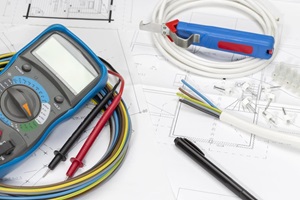- Energy Access
- Energy Technologies
- Energy Technologies
- Microgrid
- Renewable Energy
- Renewable Energy
Energy Access Continues to Attract Power, Internet, and Tech Giants

Recent moves by some of the largest energy and Internet companies in the energy access space highlight the social and economic allure of providing electricity to remote, typically rural, communities in developing countries. More than 1 billion people have unreliable access to electricity and are reliant instead on harmful and expensive sources of lighting such as kerosene and diesel. Growing public and private investment in the sector continues to grab headlines—and increasingly ambitious roadmaps—but it remains to be seen how these projects will pan out. A round up from the past few months indicates the growing momentum:
- In March, ENGIE signed three partnerships in Indonesia for microgrid and renewable energy development agreements to develop, co-finance, build, operate, and maintain microgrid and other renewable energy projects worth up to $1.25 billion over the next 5 years. As part of the agreement, ENGIE partnered with microgrid developer Electric Vine Industries to target 3,000 villages in the province of Papua over a 20-year period—reaching an estimated 2.5 million people and requiring $240 million over the next 5 years. The announcement is an exciting development that, if realized, could make a significant contribution to the country’s Bright Indonesia rural electrification program targets Papua as a priority area for increasing its electrification rate from 85% in 2015 to 97% over the next 3 years.
- In April, founding partners Allotrope Partners, Facebook, and Microsoft launched the Microgrid Investment Accelerator (MIA) at the annual United Nations Sustainable Energy for All Forum. According to the press release, “This first-of-its-kind energy access financing facility seeks to mobilize ~$50 million between 2018-2020 to expand energy access to communities that currently lack reliable access to modern energy services in India, Indonesia and East Africa.” The MIA seeks to accelerate energy access microgrids through an ecosystem approach to finance—leveraging grant and concessionary finance from foundations and development finance institutions to mobilize private sector capital into renewable energy microgrid projects. With Internet and tech giants involved, others are likely to join; a solicitation to developers is slated for summer 2017.
- Pay-as-you-Go (PAYG) is an Internet of Things (IoT) off-grid lighting solution that is gaining traction. PAYG enables rural, typically off-grid, customers to pay for electricity service in the form of a 1W-5W lantern or 10W-200W solar home system—or as part of a remote microgrid using their mobile phone. M-KOPA, Angaza, BBOXX, and others have been successful in expanding distribution of lighting products that are monitored and paid for via their cellular-enabled payment platforms.
- Providing high-level context on the direction of energy access globally, the recently released State of Electricity Access Report 2017 provides an up-to-date look at how countries and governments are faring in the race to meet the sustainable development goal of universal access to electricity by 2030. The report underscores the importance of the integrated public-private approach being taken by ENGIE, Enel, MIA, and others that have operated in the energy access sector over the past year.
Taken together, these recent announcements showcase how rising connectivity—and in many cases, incomes—are attracting investment activity in the energy access sector.